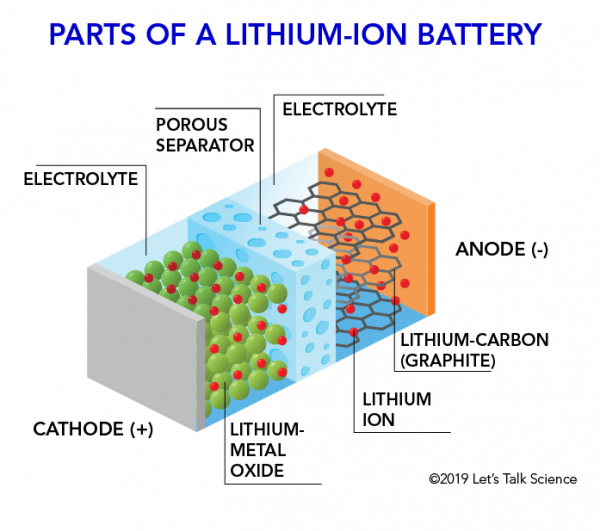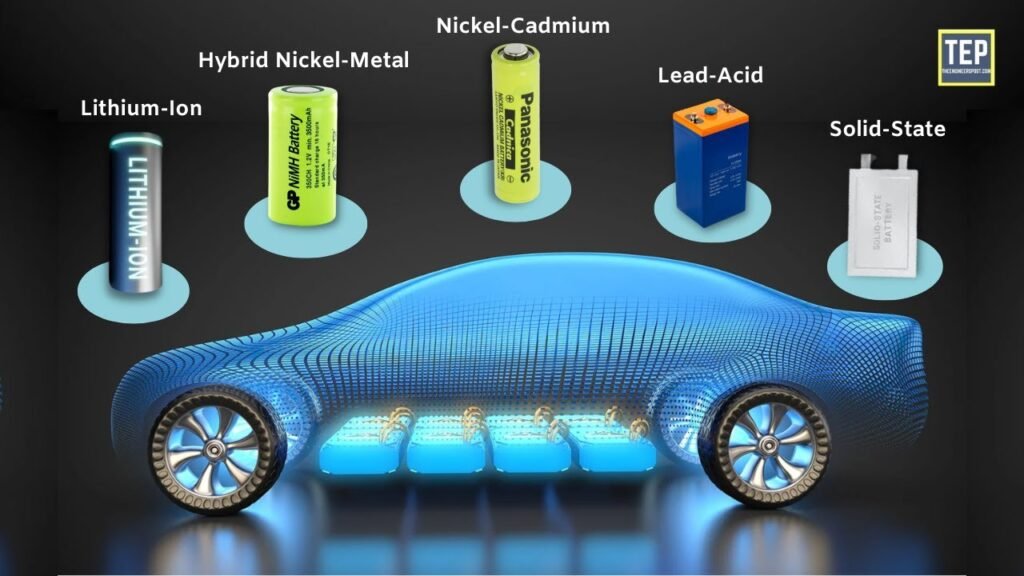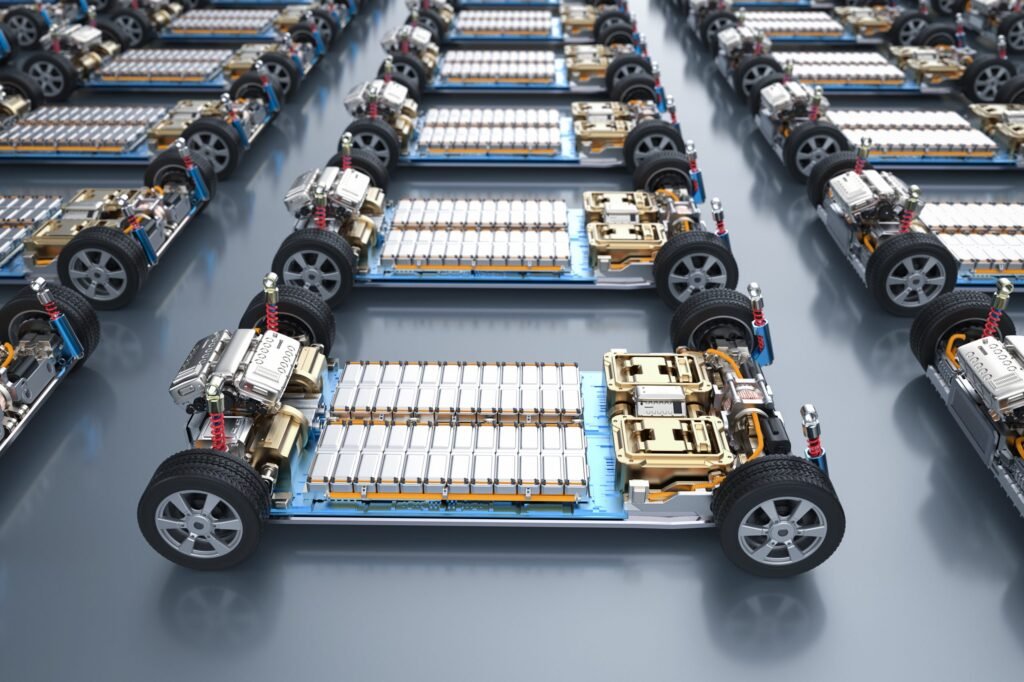Table of Contents
- Introduction
- Origins and Development
- Mechanics of Lithium-ion Batteries
- Applications of Lithium-ion-Batteries
- Challenges and Innovations
- Future Prospects of Lithium-ion-Batteries
- Conclusion
- Frequently Asked Questions
Introduction:

Origins and Development:

- The inception of lithium-ion batteries traces back to the 1970s when researchers Stanley Whittingham, John Goodenough, and Akira Yoshino made groundbreaking discoveries.
- Whittingham’s work with titanium disulfide laid the foundation for rechargeable lithium-ion technology.
- Goodenough’s breakthrough in the 1980s with cobalt oxide cathodes significantly improved battery performance.
- Yoshino’s invention of the first commercially viable lithium-ion battery in 1985 propelled the technology into widespread use.
- The collaboration between academia and industry has been instrumental in the development of lithium-ion batteries, with research institutions and companies investing in R&D to improve battery performance and affordability.
- Over the years, advancements in materials science and engineering have led to the refinement of battery components, including electrodes, electrolytes, and separators, resulting in higher energy density and longer cycle life.
- The commercialization of lithium-ion batteries in the 1990s paved the way for their widespread adoption in consumer electronics, catalysing a revolution in portable technology and enabling the proliferation of smartphones, laptops, and wearable devices.
- The automotive sector has emerged as a key driver of innovation in lithium-ion battery technology, with major automakers investing billions of dollars in electrification efforts to develop long-range electric vehicles capable of challenging the dominance of internal combustion engine vehicles.
Mechanics of Lithium-ion Batteries:

- Lithium-ion batteries operate based on the movement of lithium ions between the positive (cathode) and negative (anode) electrodes during charge and discharge cycles.
- The cathode typically consists of lithium metal oxide, while the anode commonly comprises graphite or silicon.
- Electrolytes facilitate ion movement, while separators prevent short circuits.
- During charging, lithium ions move from the cathode to the anode, and during discharging, they migrate back to the cathode, releasing energy in the process.
- Understanding the electrochemical processes occurring within lithium-ion batteries is crucial for optimizing their performance and reliability.
- The reversible intercalation of lithium ions into the host material of the electrodes during charge and discharge cycles is governed by principles of diffusion and electrochemistry.
- Factors such as electrode morphology, particle size, and surface area play a critical role in determining battery performance characteristics, including capacity, power density, and cycling stability.
- Innovations in electrode design, such as the use of nanostructured materials and coatings, aim to enhance ion transport kinetics and minimize degradation mechanisms, thereby extending battery lifespan and improving overall efficiency.
Applications of Lithium-ion batteries:

1. Consumer Electronics
2. Electric Vehicles (EVs):
3. Renewable Energy Storage
Challenges and Innovations:
1. Safety Concerns
2. Cost Reduction
3. Environmental Impact
4. Battery safety:
5. Electrolyte Formulations
6. Sustainable Battery Technologies:
7. Collaborative Efforts:
Future Prospects of Lithium-ion Batteries:
1. Advancements in Battery Technology
2. Electric Transportation Revolution
3. Energy Storage Revolution
4. Artificial Intelligence:
5. The electrification of aviation and marine transportation:
6. Collaborative research:
Conclusion:
In conclusion, the journey of lithium-ion batteries from laboratory discovery to ubiquitous technological marvel embodies the spirit of innovation and progress. As we navigate the challenges and opportunities of a rapidly changing world, the evolution of lithium-ion batteries remains at the forefront of our quest for a more sustainable and electrifying future.
The evolution and impact of lithium-ion batteries represent a remarkable success story in the history of science and technology. From their humble beginnings in the laboratory to their ubiquitous presence in modern society, these rechargeable power sources have transformed the way we live, work, and interact with the world around us. As we continue to push the boundaries of energy storage and electrification, lithium-ion batteries will undoubtedly play a central role in powering the innovations of tomorrow and shaping a more sustainable and prosperous future for generations to come.
Frequently Asked Questions:
Lithium-ion batteries are rechargeable batteries that use lithium ions as the primary component of their electrochemistry. They work by moving lithium ions between the positive and negative electrodes during charge and discharge cycles. The positive electrode is typically made of lithium cobalt oxide or other lithium-based compounds, while the negative electrode is typically made of graphite. When the battery is charged, lithium ions move from the positive electrode to the negative electrode, storing energy. During discharge, the ions move back to the positive electrode, releasing energy.
Recent advancements in lithium-ion battery technology include improvements in energy density, safety, and charging speeds. Innovations such as the development of new electrode materials like lithium iron phosphate (LiFePO4) and lithium nickel manganese cobalt oxide (NMC) have increased energy density and longevity. Additionally, research into solid-state electrolytes and advanced thermal management systems has enhanced safety and reduced the risk of overheating or fire. Moreover, advancements in fast-charging technologies have significantly reduced charging times, making lithium-ion batteries more convenient for everyday use.
Lithium-ion batteries have had a transformative impact on numerous industries and applications. In the automotive sector, they have enabled the widespread adoption of electric vehicles (EVs) by providing long-range capabilities and rapid charging options. In consumer electronics, lithium-ion batteries power smartphones, laptops, tablets, and other portable devices, offering lightweight and compact energy storage solutions. Furthermore, they play a crucial role in renewable energy storage systems, such as grid-scale batteries and home energy storage units, facilitating the integration of solar and wind power into the electricity grid.
While lithium-ion batteries offer many benefits, including reduced greenhouse gas emissions compared to traditional combustion engines, their production and disposal raise environmental concerns. The extraction of lithium, cobalt, and other rare earth metals required for battery manufacturing can have adverse impacts on ecosystems and local communities. Additionally, improper disposal of lithium-ion batteries can lead to soil and water contamination from toxic chemicals. However, efforts are underway to improve recycling technologies and develop sustainable battery materials to minimize environmental harm.
The future of lithium-ion battery technology looks promising, with ongoing research focused on enhancing performance, reducing costs, and addressing environmental concerns. Advancements in materials science, such as the development of silicon anodes and solid-state electrolytes, could further increase energy density and safety. Moreover, innovations in manufacturing processes, such as roll-to-roll production and 3D printing, may lead to economies of scale and lower production costs. Furthermore, the integration of lithium-ion batteries with emerging technologies like artificial intelligence (AI) and the Internet of Things (IoT) could unlock new applications and capabilities, paving the way for a more electrified and sustainable future.

